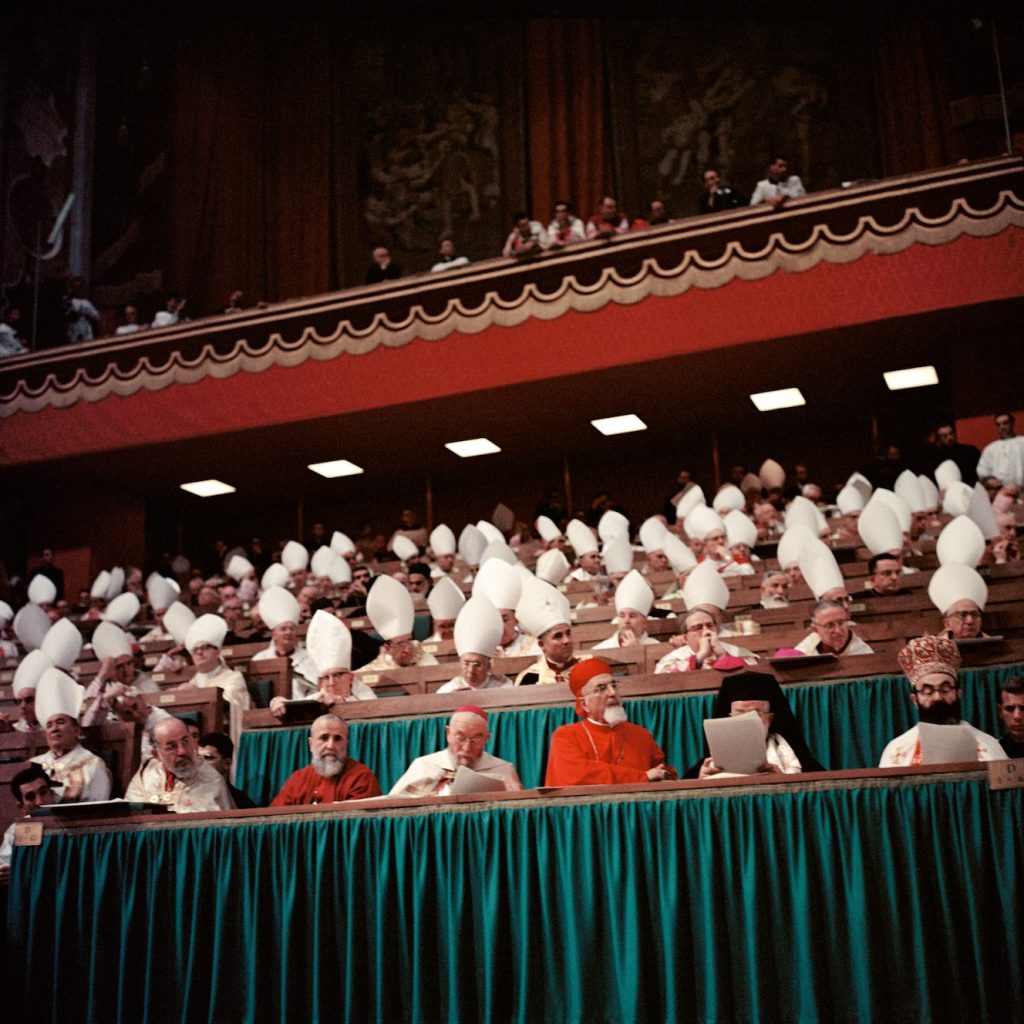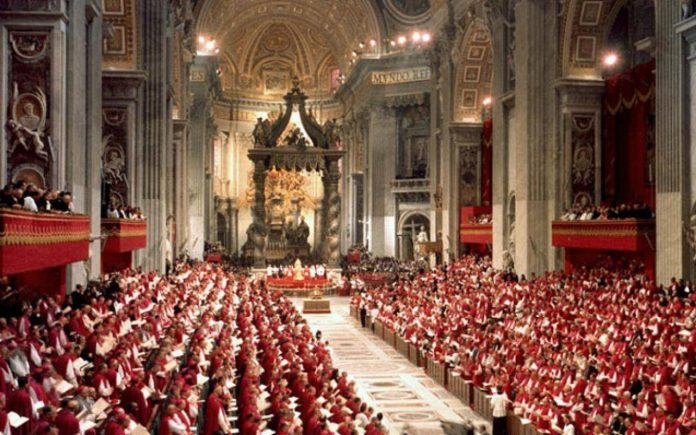On January 30, 2021, Pope Francis said that there should be no concession to those who deny the teachings of Vatican II.
“You can be with the church and therefore follow the council, or you can not follow the council or interpret it in your own way, as you want, and you are not with the church,” the pontiff said in a meeting with a group of catechists connected to the Italian bishops’ conference.
“The council is the magisterium of the church,” said the pope. “On this point we must be demanding, severe. The council cannot be negotiated.”
In order to place things in perspective, it might be good to revisit the background of this controversy by reposting what I wrote in November 2012 (at the National Convention of Religious Treasures in the Philippines). This debate on how to interpret the Council in fact fires some fierce mudslinging in high places among Cardinals and bishops and is the reason of the present anti-Francis fever among ordinary Catholics in some countries, especially the US.
Let me start in the halls of Vatican II in 1962. Already from the beginning, there were real debates, some of them very dramatic leading to walk-outs, between the so-called “progressives” and “conservatives.”
On the one hand, those who wished to preserve the status quo were a minority but they held crucial positions in the Curia (the present Congregation of the Doctrine of the Faith [CDF] then called “The Holy Office”). They prepared the drafts for discussion (schema) and controlled the Council agenda.
On the other hand, the bishops who wanted change were influenced by the brewing renewal movements then (liturgical, biblical, ecumenical, patristics) and listened to emerging theologians during that time (Rahner, Congar, Schillebeckx, Ratzinger, etc.). They were not many but they were able to slowly rally the majority.
Colorful anecdotes abound on the clash of these two contending paradigms in the Council (Rynne 1963-1966). The first encounter already started on the first day – October 13, 1962. The Council fathers were asked to vote on a pre-selected list of bishops to head the different commissions. Most of the names in the list were members of the Roman Curia.
Cardinal Liénart of France rose up and, in a prepared speech, proposed that they first meet in caucuses as bishops conferences in order to select their own candidates. It was seconded by Cardinal Frings of Germany – whose theologian-consultant was the young priest, Fr. Joseph Ratzinger. This suggestion was greeted with a long applause indicating the sentiment of the assembly – of which a vote is no longer necessary. After barely 15 minutes of session that first day, the moderator adjourned the meeting to give in to the proposal.
In the words of the young Fr. Ratzinger: “a decision of great moment had here been made. The Council had shown its resolve to act independently and autonomously, rather than be degraded to the status of a mere organ of the preparatory commission” (Ratzinger 1966).
In 1985, however, Cardinal Ratzinger (the future Benedict XVI) wanted to re-read that same event and said that Pope John XXIII was quite angry with that first day coup. However, Louis Capovilla – the long time secretary of the John XXIII – said that the Pope was delighted that the Council was reasserting itself (Sullivan 2002, 28).
This revisionist reading is very much alive in our times – fifty five years after the Council. Truth to tell, many of us have not read all the documents ourselves. But those who have, those who are studying it closely and even those who have been there – could not agree how to read it. There are at least three existing interpretations: for want of a better name, we call them the traditionalists, the progressives, and the reformers (Faggioli 2012). It might be good to lay down their positions vis-à-vis Vatican II since their differing interpretations make our reading of Vatican II a bit confusing but also more exciting.

THE TRADITIONALISTS. From the minority conservative wing of the Vatican II debates emerged the “traditionalists” who rejected the Council itself. They could not swallow the change that Vatican II teaches – from its tinkering with the liturgy, religious freedom, relationship with other religions, etc. They think that what happened there was a maneuvering of some northern European bishops, thus, could never be a work of the Holy Spirit. This group is also called the “sedevacantists” since the Papacy should have been vacant (sede vacante) from the time Pope Paul VI promulgated the acts of the Council. According to this group, by adopting Vatican II, the Church has become heretical or schismatic and Paul VI formally ceased to be a Pope. Spread all over the world – in blogs, movements, internet groups, periodicals, etc. – this group’s foremost representative is the Society of St. Pius X (SSPX) founded by Archbishop Marcel Lefebvre.
Lefebvre’s group continued celebrating the Tridentine Mass, rejected Vatican II and thinks that the Catholic Church has been infiltrated by liberals, communists and freemasons. When Lefebvre consecrated four bishops to succeed him in his Congregation without permission from Rome, John Paul II excommunicated him and the bishops he ordained. The plot becomes more complicated when Pope Benedict XVI lifted the excommunication of these bishops in 2009, allowed the celebration of the Tridentine Mass for all Catholics and opened the way for their rehabilitation – to the uproar of many European Catholics who knew all along that one of those bishops (Richard Williamson) was openly anti-semitic and denied that the holocaust happened to the Jews.
THE PROGRESSIVES. The second group carries the “progressive” line of interpretation. This group tries to advance the direction that the Council took as it was passed by the majority of bishops in the Assembly. As you well know, all the 16 documents were approved with very large majority of votes. After the Council, these bishops and theologians set to implement Vatican II’s liturgical reform, push structures of collegiality, open the church to dialogue with the modern world and other religions. There was euphoria after the Council. Vatican II was considered a decisive “event” (Komonchak), a “rupture” from the previous councils, “the beginning of the beginning” (Rahner), “new Pentecost” (John XXIII, Ratzinger), etc.
But there was also so much to do: to adapt liturgical celebration and formulate new norms, to systematize the new theology, etc. Leading theologians that belong to this group were also the theologian-consultants (periti) of the Council – Karl Rahner, Marie-Dominique Chenu, Yves Congar, Edward Schillebeeckx, Hans Küng, etc. This group started a journal called Concilium in 1965 in order to theologically reflect “and continue the work of Vatican II.” Today, Concilium is translated into 6 languages and serves thousands of subscribers all over the world. Ratzinger was among its first editors. Later, Ratzinger parted ways with them (Ratzinger 1985, 1987).
THE REFORMERS. The third group is sometimes called the “hermeneutics of reform” (Faggioli 2012; O’Malley 2012). While the progressives are said to advance the hermeneutics of rupture or discontinuity, this group calls for the hermeneutics of reform or continuity. According to them, Vatican II is not a rupture but is in fundamental continuity with the whole tradition of the Church. Belonging to this group is another set of theologian-consultants of Vatican II – Henri de Lubac, Jean Danielou, Hans Urs von Balthazar and Joseph Ratzinger.
While the second group has Concilium, this group also founded a journal in the 1970s – Communio. Some authors define the debate between these two camps as rooted from their different theological pedigrees. While the progressives are neo-Thomists; the members of the third group are neo-Augustinians (Komonchak 2009; Faggioli 2012). They also differ in method: while the second group reads Vatican II as a challenge to fully engage the modern world and its challenges (aggiornamento), this third group argues for a renewal of the church by going back to the sources (ressourcement). Crucial to the present debate is that Pope Benedict XVI and the Roman Curia favor the hermeneutics of continuity – an affirmation which he made public months after he became Pope in 2005 and now forwarded as the authentic hermeneutics of the Vatican II.
This makes the reading of Vatican II today more complex – but also more exciting – than usual. It is good to distinguish these different readings in order to understand the challenges of Vatican II as it is played out in the complex theological debates and pastoral movements in our times.
The questions that I will raise in future posts are meant to better appreciate Vatican II in our context in response to Pope Benedict XVI’s invitation to healthy debate and “initial goodwill without which there can be no understanding” (Ratzinger 2007). It is also an invitation for the Church to honestly read the signs of the times, and respond accordingly to the voices of the poor on the rough grounds of history (Pope Francis).
Father Daniel Franklin Pilario, C.M. is a theologian, professor, and pastor of an urban poor community in the outskirts of the Philippine capital. He is also Vincentian Chair for Social Justice at St. John’s University in New York.









